Old Navy Will Pay Employees to Work the Polls on November 3
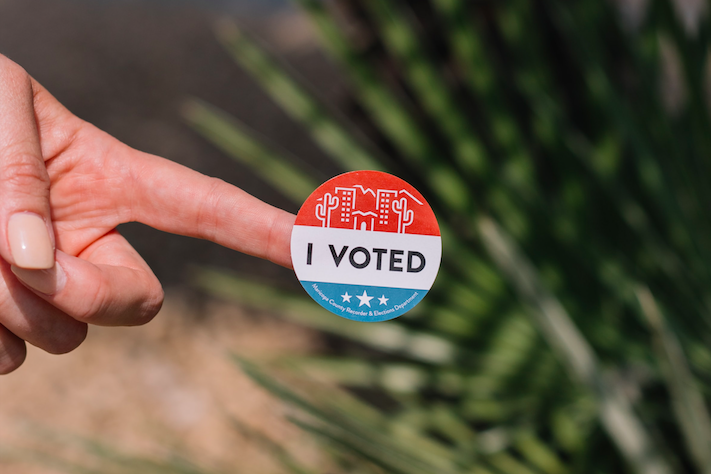
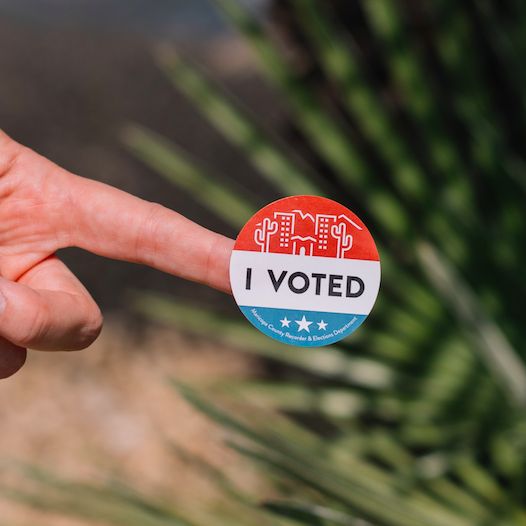
The confluence of this pandemic, the accompanying economic crisis and the dire state of race relations in the U.S. is jolting more companies into understanding the harsh realities people face day-to-day, many of which can get in the way of allowing them to cast their votes. Now Old Navy is wading into the national voting rights conversation with today’s news — occurring on what happens to be National Poll Recruitment Day — that the brand will pay its retail employees to serve as poll workers on Election Day.
As reported on several outlets including Fortune, this announcement from Old Navy is remarkable because of who qualifies: This opportunity is available to hourly workers only, not for white-collar or executive employees who work for the brand’s corporate offices.
In addition, Old Navy said it would provide shift coverage for employees who need to vote in-person on November 3.
As reporter Rachel King of Fortune noted, the moves Old Navy is making are important as almost two-thirds of its retail employees are 29 or younger, a demographic that historically has a low rate of voter participation. Other companies that boast a large base of younger millennials or Gen X consumers, such as Snapchat, have also taken action to mobilize the youth vote.
Additional retail chains, such as Starbucks, have taken measures to ensure their hourly workers aren’t chained to the espresso bar or checkout register on Election Day so they can cast their ballots with minimal worry.
But Old Navy stands out for actually encouraging its employees to work at voting polls nationwide and adding the incentive of a full day of pay. Such a move is important at a time when confusion reigns over how and if many Americans can even vote. And mind you, a Pew Research study released earlier this year found that during the U.S. 2018 midterm elections, almost 60 percent of poll workers were at least 61 years old – and more than a quarter of them were over the age of 70. There’s no shortage of analysis that explains this is also the age demographic most at risk of catching COVID-19.
Old Navy says it is working with two groups to make this effort pay off. First, Power the Polls is partnering with organizations that seek to diversify poll workers nationwide, both in age and other demographics. Next, Civic Alliance is a coalition of businesses that is encouraging all U.S. citizens to take their voting and civic engagement responsibilities seriously.
This isn’t the first time Old Navy has waded into politics. Last year, the retailer turned the idea of what defines “patriotism” on its head with a line of purple T-shirts sold just before July 4 as part of a campaign to boost civic engagement and raise awareness about the need for anti-discrimination laws.
Another Gap-owned brand is joining Old Navy in its efforts to boost voting nationwide: Banana Republic announced today it will work with the nonprofit Rock the Vote to help encourage, remind and urge people to make it to the ballot box, in person or via the U.S. Postal Service, on November 3.
Sign up for the weekly Brands Taking Stands newsletter, which arrives in your inbox every Wednesday.
Image credit: Phillip Goldberry/Unsplash
One Year After the Business Roundtable Statement, Purpose Is Still a Work in Progress

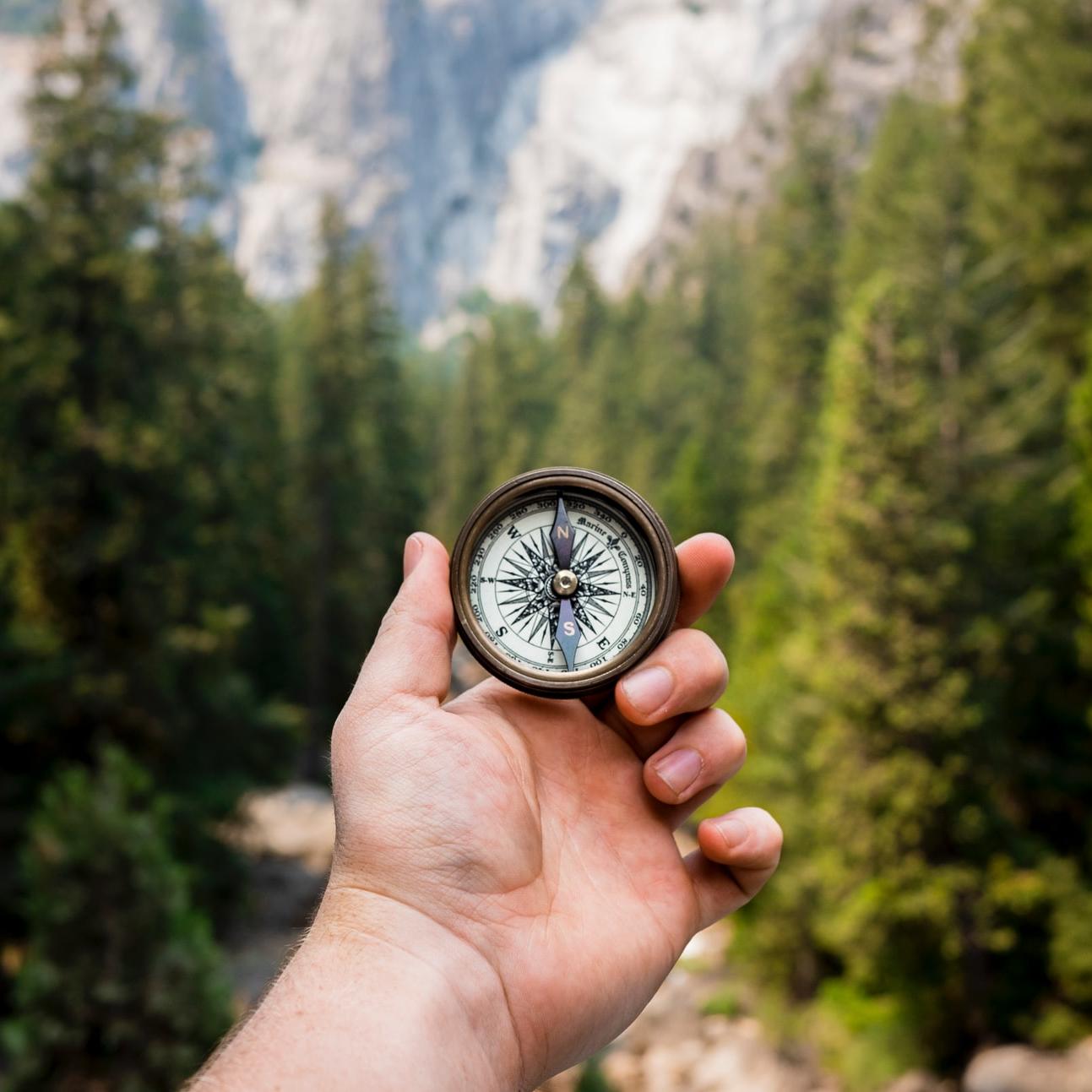
It’s been just over a year since the 181 CEOs affiliated with the Business Roundtable (BR) signed a letter agreeing that from that moment forward, executives need to think about how their companies can benefit all stakeholders with a mission of purpose: customers, employees, suppliers, local communities and shareholders.
“The American dream is alive, but fraying,” said Jamie Dimon, chairman and CEO of JPMorgan Chase & Co. and the Business Roundtable’s chairman, in an August 2019 public statement. “Major employers are investing in their workers and communities because they know it is the only way to be successful over the long term. These modernized principles reflect the business community’s unwavering commitment to continue to push for an economy that serves all Americans.”
We’re in a much different world than we were 12 months ago, and in a recent survey that the Harris Poll and Just Capital completed, 90 percent of Americans agreed with the sentiment that it’s important for large companies to support an economy that serves all people.
The problem, however, is that companies are not perceived as applying this sense of purpose when it comes to who we now describe as “essential workers.” Less than half of those surveyed said the current economy has a positive impact on workers’ financial well-being. In contrast, 72 percent of the same respondents said shareholders are benefiting.
So, it’s clear corporate America has some work to do. The compass may be pointed in the right direction, but corporate America is far from finding true north, as 80 percent of Americans questioned in this poll believe U.S. public companies should consider their impacts on all shareholders equally.
“The perception is that shareholders reap the lion’s share, while other stakeholders lag behind, especially communities, workers, and the environment,” write the report’s authors.
And as for enthusiasm, approximately one in five survey respondents said corporations are performing “very well” when it comes to executing their purpose.
The survey was completed in late July, well before news headlines were jammed with stories about the California wildfires and Hurricane Laura. Nevertheless, 37 percent of Americans have a dim view of companies’ effects on the environment, the negative impact that scored highest in this survey. Other negative effects cited included both the financial and health well-being of U.S. workers.
The number of signatories to BR’s statement has since increased to 220 companies, but this study shows that businesses, no matter what their purpose may be, still have some work to do to earn citizens’ trust. There are countless factors: the constant hyping of and confusion over potential COVID-19 vaccines, the uneven distribution of funds during the federal government’s paycheck protection program, and news stories about how layoffs were handled as well as what retail workers are often experiencing on the job.
In fairness, part of the problem here — aside from the deluge of bad news on a daily basis — is that many companies are still grappling with how they are communicating their purpose. “There has been little guidance for board directors, senior executives, and investors on how purpose should be best put into practice,” writes Bob Eccles for Forbes. “Purpose needs to be enacted as an organizing principle, informing strategic decision-making and capital allocation, and drawing on the everyday values and culture to deliver the organization’s vision.”
Sign up for the weekly Brands Taking Stands newsletter, which arrives in your inbox every Wednesday.
Image credit: Jamie Street/Unsplash
U.S. Companies Line Up Behind the Trillion Trees Movement
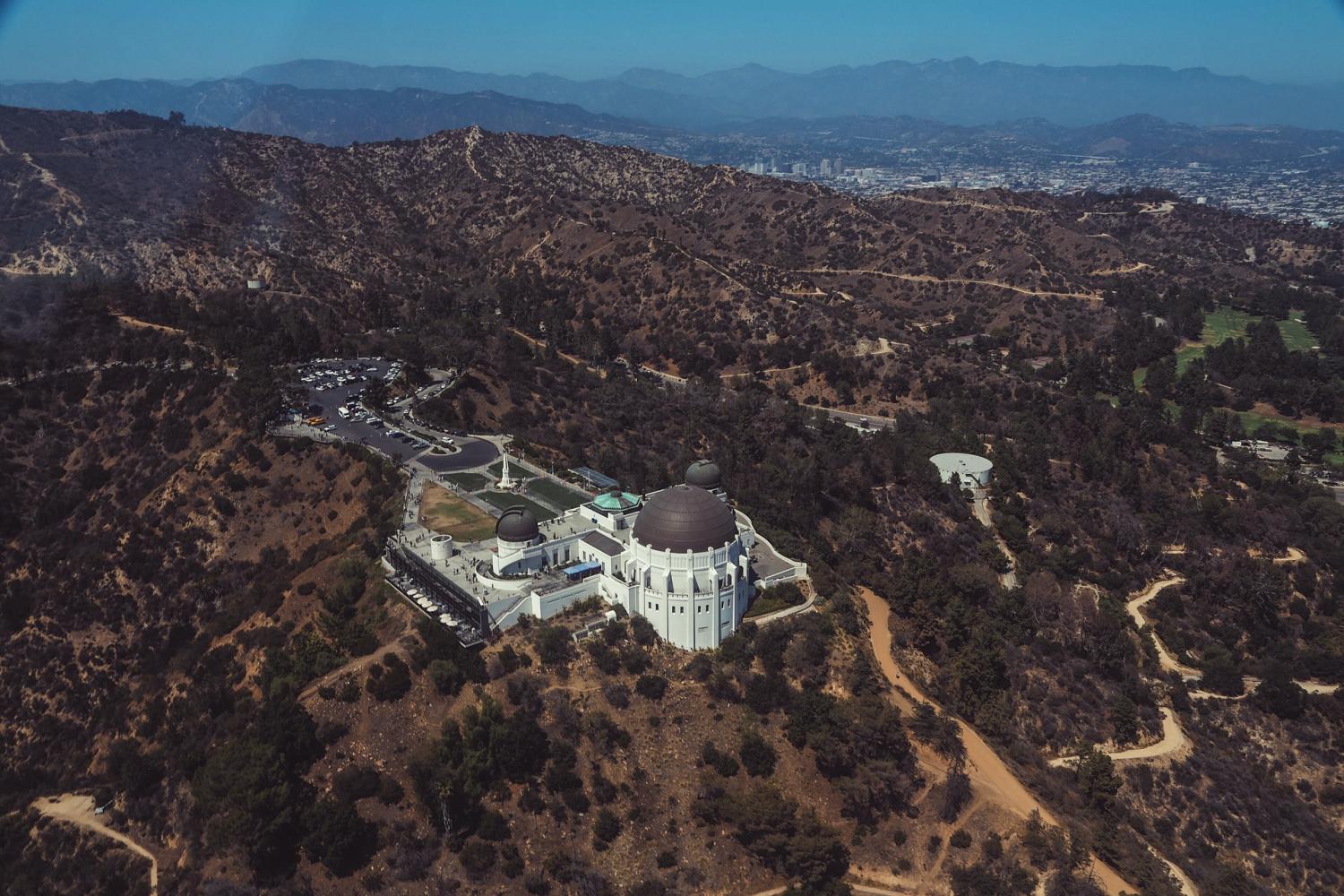
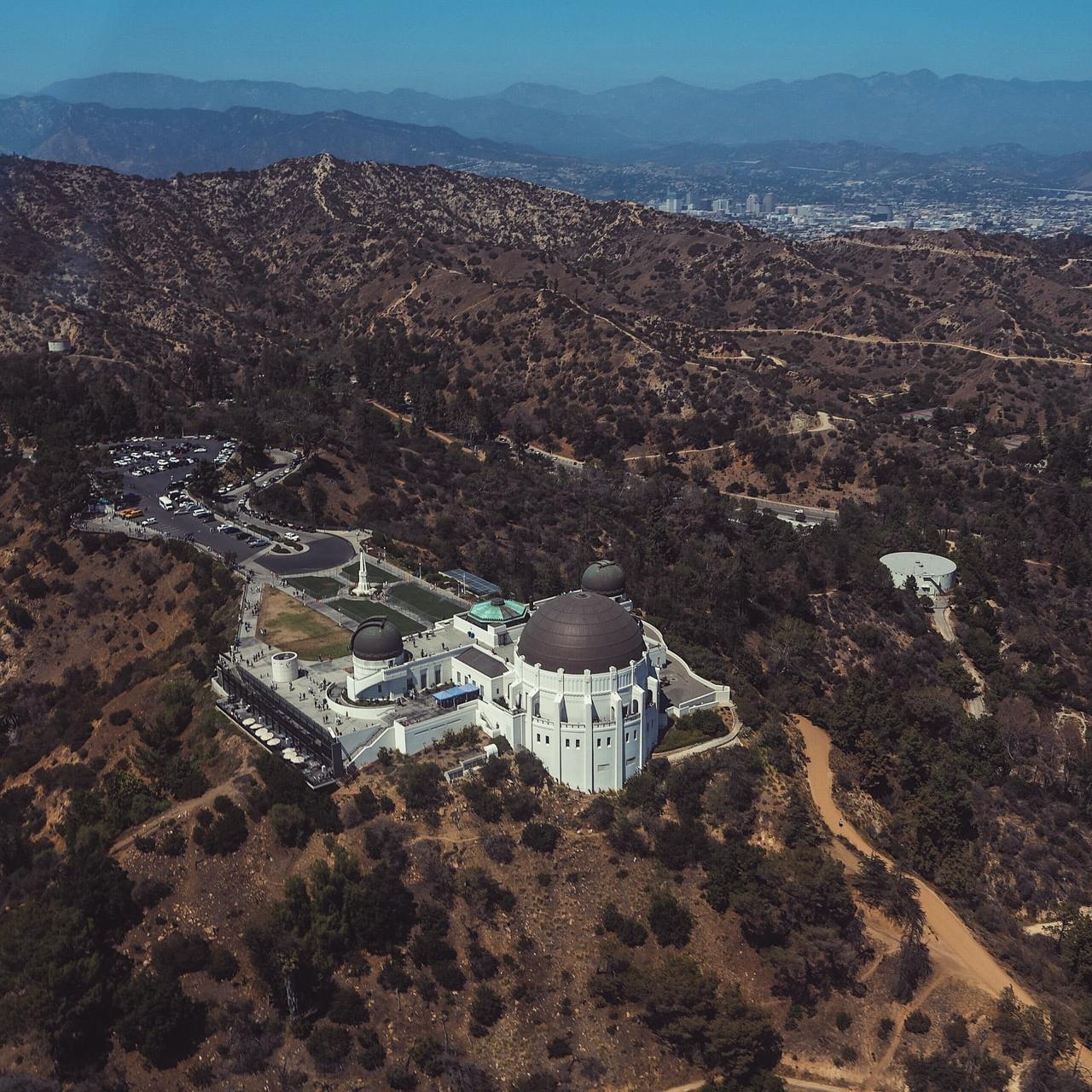
Photo: The Griffith Park Observatory overlooking Los Angeles. The city’s drive to plant trees offers lessons for the global trillion trees campaign that is now underway.
Since the Word Economic Forum (WEF) announced its global trillion trees effort earlier this year, the movement has appeared to gain steam — and the recent California wildfires, along with Hurricane Laura, certainly helped raise some awareness about the need for investing in tree canopy here in the U.S.
Several months after WEF’s 1t.org launched, several U.S. companies, nonprofit groups and cities have pledged to do what they can to help with this ambitious tree-planting effort on this side of the pond.
Companies that have announced they are now part of this trillion trees campaign include Clif Bar, HP, Mastercard and Microsoft. Various civic groups including those located in Boise, Dallas, Detroit and Tucson say they are also on board. And the nonprofit component is an eclectic group with such names on the roster including the American Forest Foundation, EcoSikh and the Evangelical Environmental Network. The bottom line: It’s pretty hard to disagree about trees.
One company that’s working within this group is Timberland. That should not be a surprise — the outdoor clothing and gear brand has sported a tree on its logo for almost a half-century, long before such stands were en vogue. The company has positioned tree-planting as an important part of its supply chain work, whether it’s to help revive the cotton industry in Haiti or invest in green spaces across U.S. urban areas.
Speaking at last year’s 3BL Forum, Atlanta McIlwraith, Timberland’s senior manager of community engagement and communication, described the company’s ongoing tree-planting and sustainability campaigns as “a call-to-action to engage people in small, everyday actions that make a difference and help create a greener world. The small actions add up, and as many people do small actions, you get a movement—and it is movements that change the world."
Timberland, which says it has planted 10.7 million trees across the globe since 2001, announced last week that it will partner with 1t.org by working with various groups to plant 50 million trees by mid-decade.
This trillion trees announcement may at first seem unreachable and even smack of a slick public relations move. But the figure isn’t entirely ridiculous once a little math is done. The U.S. holds about 6 percent of the world’s land mass, so the quick answer is that those 1 trillion trees in theory could be distributed easily across the globe. Of course, some regions of the world would score more trees while others are inhospitable to tree-planting efforts, period.
Such an effort could certainly be worthwhile. The World Resources Institute (WRI), for example, concluded earlier this year that 60 billion trees could be planted across the U.S. without leaving any negative impact on the nation’s food supply. The results, according to WRI, include the potential savings of up to 540 million tons of carbon dioxide that would otherwise end up in the atmosphere, or enough to negate the emissions generated by the entire U.S. agriculture industry.
For such a plan to succeed, however, there needs to be a massive amount of cooperation between all sectors, or as the business world loves to say, “collaboration.” And therein comes a warning from Southern California.
Los Angeles offers a microcosm of a lesson in how difficult it is to match works with outcomes, especially when it comes to planting a trillion trees. When former Los Angeles Mayor Antonio Villaraigosa headed the city over a decade ago, one of his goals was to plant a million trees across the city that’s home to 4 million people. It seemed easy enough; residents could show up at one of the city's tree distribution sites and take home up to seven trees at no cost.
But as Villaraigosa’s tenure as mayor ended, the Los Angeles Times reported the campaign “more or less” fell short. Estimates suggested that goal fell short by 60 percent, but a piece of the puzzle was that no systems were in place to track the trees once they were taken from schools, parks or other sites where the city distributed them. A decade later, one report suggested the city’s total tree canopy didn’t budge much, if at all. The good news is that such tree planting programs are still available in LA, but the Times editorial suggested more emphasis should be put on the long-term care of trees, “with less emphasis on some alpine-high number and more on raising awareness about what an owner must do to maintain a tree.”
Image credit: Joel Muniz/Unsplash
Collaboration Drives Water Stewardship Forward in the Food Sector
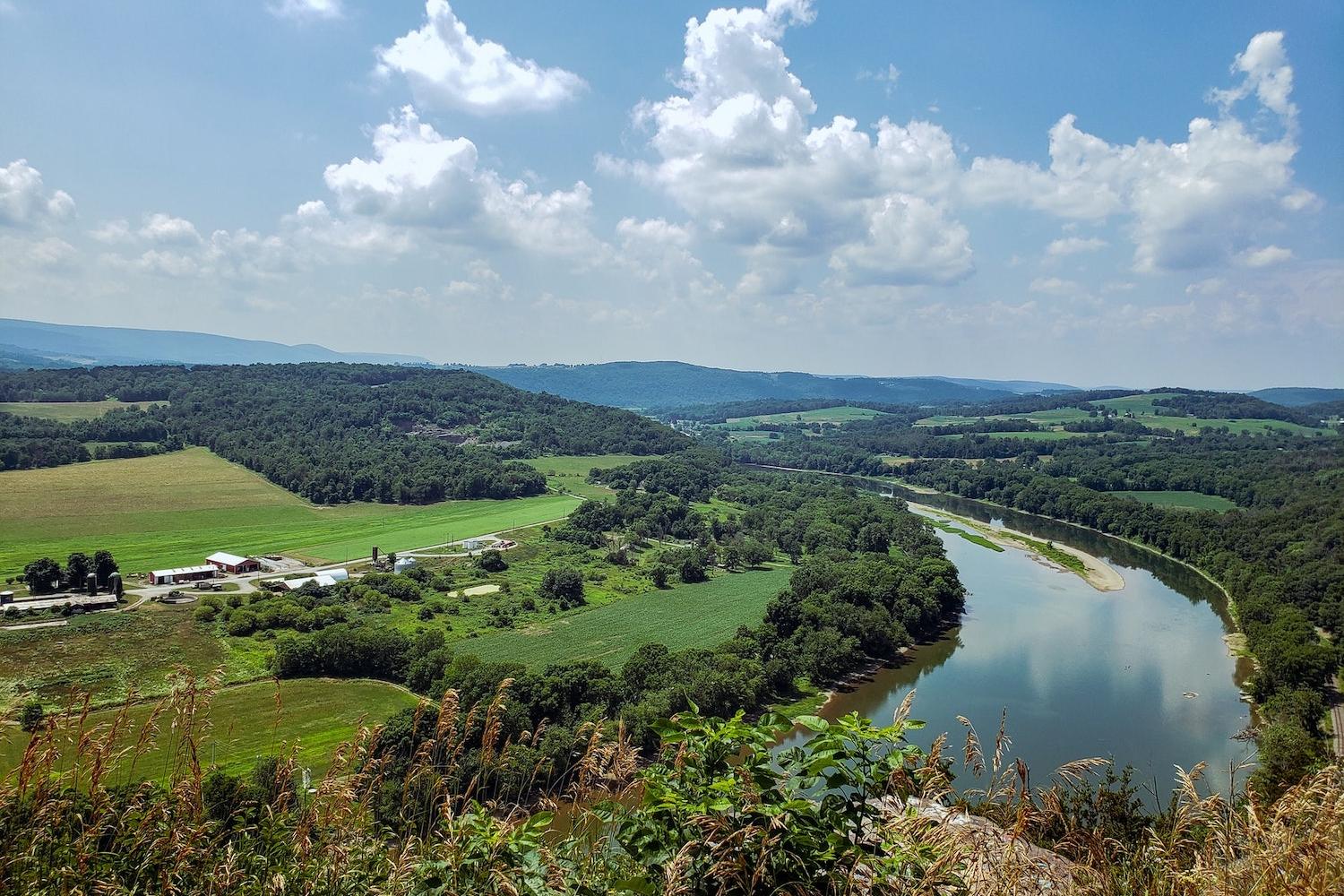
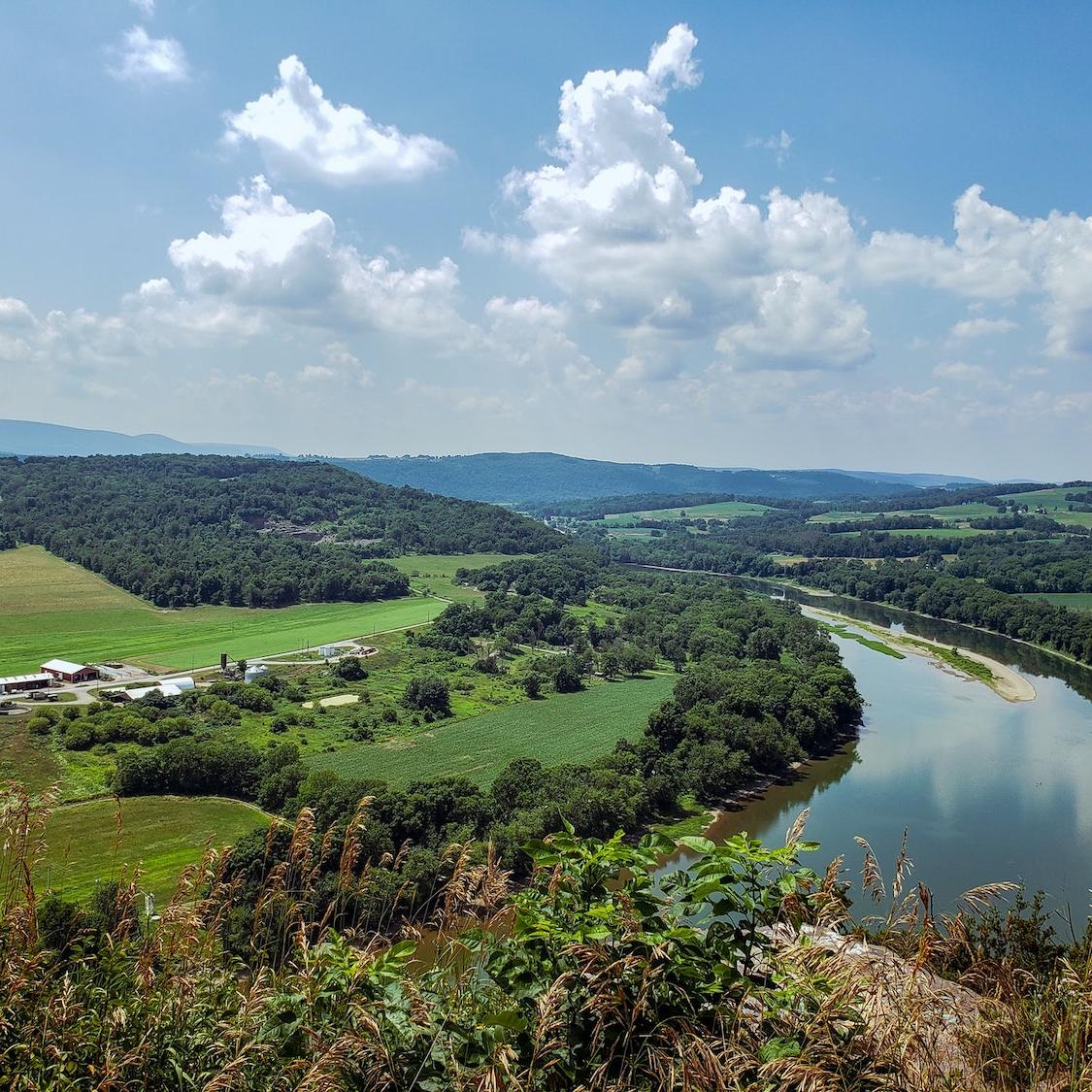
By 2025, around 1.8 billion people will live in countries or regions with absolute water scarcity. Because the agricultural sector accounts for around 70 percent of all freshwater use, it must play a significant part in protecting and preserving water quality and quantity. Promoting water stewardship is a heavy lift that requires shifting the way agriculture has traditionally been run, but some food companies are building partnerships and setting goals to ensure there is enough water for both their operations and the communities they serve.
Behind many of these connections is the AgWater Challenge, launched by Ceres and the World Wildlife Fund (WWF) in 2016 to facilitate partnerships between food and beverage companies and their stakeholders. The Challenge has already bred dozens of multi-stakeholder collaborations, helping companies, suppliers, and communities set measurable and achievable goals to reduce their water demand and improve sustainability in the agricultural supply chain. Hormel Foods, a founding member of the AgWater Challenge, is one company that’s upping its goals and expanding what it means to be a water steward while mitigating its own risk.
Forging watershed partnerships creates positive impact
When we think of corporate water stewardship, we often go straight to the manufacturing plants. And while that’s where the operational reductions will happen, companies taking interest and investing in the protection of the watersheds where they do business is common-sense stewardship that drives the far-reaching impact needed to address water scarcity.
To understand what that means in practice, let’s break down just one example: In 2018, Hormel Foods and Land O’Lakes joined other public, private, and nonprofit partners in the Cedar River Watershed Partnership to address water quality and quantity issues in the Cedar River area of southern Minnesota, the first collaboration of its kind in the state. “At its heart, the partnership was an opportunity to improve the stakeholder process and to protect the watershed,” said Tom Raymond, director of environmental sustainability at Hormel Foods.
“We all had the same goal: to protect the quality and quantity of the water in the Cedar River,” Raymond said, “but each partner had different paths to reach the end goal. It seemed everybody was knocking on the same door seven times.” So, Hormel Foods and the other partners combined each other’s strengths to make the process more streamlined and efficient with clear end goals. “Nobody knows the area better than the watershed district and the ag retailers had the best relationships with growers,” Raymond explained. “Land O’Lakes is excellent at in-field evaluation, the state Ag Department can certify water quality, and we at Hormel Foods could bring our world-class communication and facilitation tools to bring everyone together.”
Though the stakeholders weren’t sure whether the enterprise would work, the partnership has become a recognized success in streamlining sustainability in the region’s watershed by providing tools and resources for farmers, including helping them get certified through the state’s Agricultural Water Quality Certification program. Future plans could include how to scale up the partnership to neighboring watersheds or even to other states.
Measurable and comprehensive goals are key to water stewardship
Having measurable, time-bound goals are also an essential component of any effective water stewardship program. Food and beverage manufacturing companies touch water at several points along their supply and operations chains. On this front, in 2011 Hormel Foods set a public goal for internal water management within their manufacturing boundaries to reduce water use by 10 percent by 2020, using 2011 as the base year. The company met its goal two years ahead of schedule and continues to realize reductions by embedding the goal into programs, processes and using peer reviews.
Hormel Foods is in the process of developing new goals for the next time horizon, this time to include organic waste reduction and a broader participation in watershed management, in line with its involvement in the Cedar River Watershed Partnership. Raymond says the company hopes to expand these goals into other manufacturing and live production operations, including high-risk areas and supply chain inputs, increasing both stakeholder feedback and educational opportunities for suppliers.
Comprehensive goals are critical, too: If a company focuses solely on one resource, e.g., water, it may miss opportunities. While a lot of production processes require direct use of water, they also require electricity to power them. Traditional sources of energy, such as coal and natural gas, use substantial amounts of water to generate electricity, while solar and wind power use only negligible amount. In its planning, Hormel Foods is also looking at climate goals that incorporate both water and energy, as well as deploying more solar at its facilities and accounting for the water savings embedded there as well. For example, in December 2019, Hormel Foods completed a solar project at a facility in California: The nearly 2,000-panel project is expected to generate about 1.2 million kilowatt-hours per year, enough to power more than 15 percent of the plant’s annual electricity consumption. It will also save an estimated 600,000 gallons of water per year.
The bottom line: Water stewardship helps companies — and communities — to thrive
The key to ensuring sustainable water resources for both our businesses and our communities is a broad vision and bold action. Raymond is quick to note that at Hormel Foods, environmental and economic goals are not in competition with each other. “It requires all hands on deck,” he told TriplePundit. “We’re dealing with very complex technical and practical issues as we figure out how to make our food journey more sustainable.” As access to food and supply chains come into sharper focus for everyone during this pandemic, it’s important to highlight how to ensure the sector is protecting essential resources for all consumers.
This article series is sponsored by Hormel Foods and produced by the TriplePundit editorial team.
Image credit: Foto Phanatic/Unsplash
The NBA Schools America on How to Secure Voting Rights
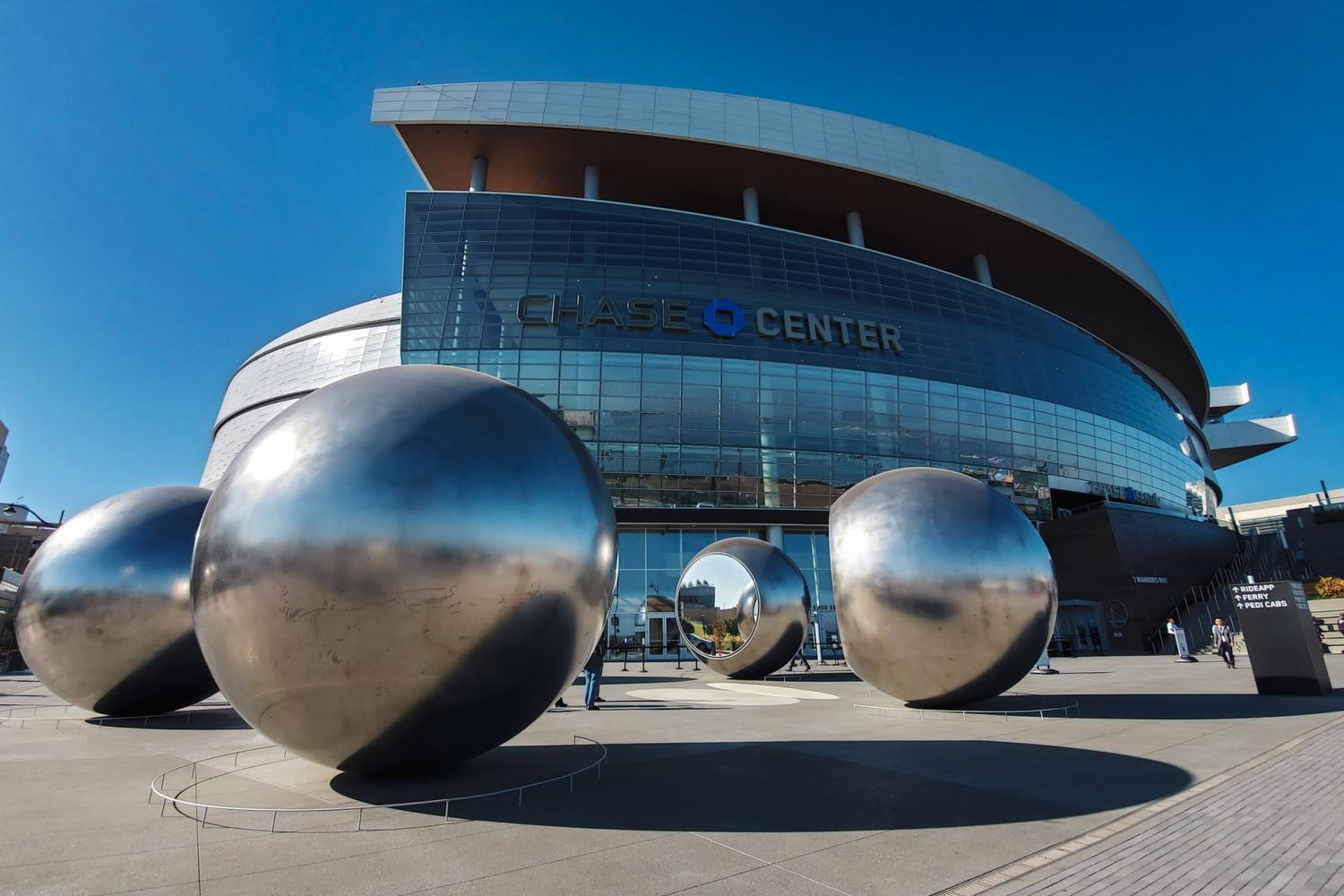
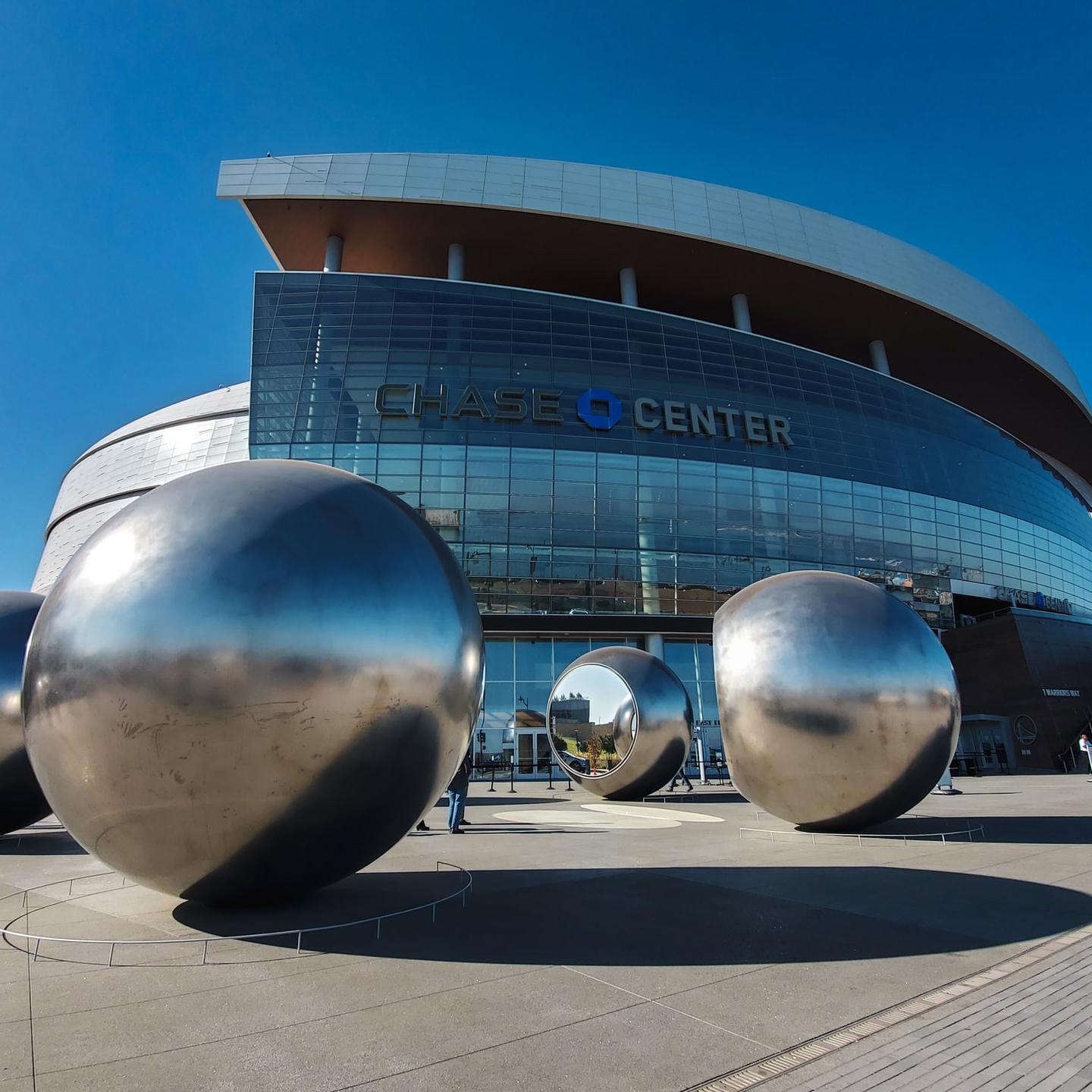
Photo: The Chase Center in San Francisco, owned by the Golden State Warriors, is one basketball arena that could become a symbol of voting rights this fall.
Considering how the latest episode of racial violence in the U.S. has played out — a Black American was shot seven times in the back trying to leave a volatile scene, then shortly after a white kid who wantonly murdered two people was in contrast given kid gloves treatment — it would have been easy for NBA players to give the country a collective middle finger.
Instead, NBA players and team owners have come up with a plan that could help ensure voting rights and boost civic engagement across the U.S. The message from players that “we’re not only here to perform for you” was heard loud and clear.
Cities need more polling places so U.S. citizens can score unfettered voting rights
Imagine if citizens could vote in places that are currently underused at the moment: office parks, lobbies of high-rises, even the parking lots at amusement parks. Cities like Milwaukee, which witnessed a “consolidation” of voting places and shortage of poll workers that resulted in depressing voter turnout in the April primaries, could surely benefit. Milwaukee is only one example of how local governments have found themselves shorthanded during this year’s election season. Whether this is due to fears over the novel coronavirus, actions taken by the courts, or directives from the states or the federal government, what’s occurring in many cities offers the private sector a chance to step in to preserve voting rights — and thereby American democracy.
In fairness, there have been efforts by corporate groups and individual companies like Levi-Strauss and Starbucks to boost civic engagement and raise awareness about citizens’ voting rights. Nevertheless, the NBA’s recent decision raises the bar.
The short answer is that, as we all know, the NBA season will continue. When teams such as the Bucks, Lakers and Clippers made noise about forgoing the season altogether, that was clearly a sign the owners and players had to agree on some sort of plan — and they did, quickly. As a result, one city will claim a championship even as the NBA playoffs continue in the current Florida “bubble."
Basketball arenas as a symbol of democracy
But what is remarkable is the NBA’s commitment to allow arenas to become converted into voting locations for the November 3 elections. In cities where any related deadlines have passed, teams will strive to use these arenas for another purpose, such as for receiving ballots or voter registration efforts. There is one caveat: the team has to own and control its home arena. Nevertheless, given the state of fraught racial relations across the U.S., few local officials want to risk the optics of looking hostile to a local sports franchise, nor would they want to face the wrath of a basketball star accusing them of hampering voting rights.
The NBA’s decision is wise for another reason. Over the past 30 years, the general trend has been for sports franchises to leave the suburbs and move back to cities’ urban cores, as many civic leaders — for better or worse — saw new sports venues as part and parcel of urban revitalization efforts. And these arenas are now often located close to the very neighborhoods that witnessed long lines during the primary elections season, including in cities such as Atlanta. This announcement also sends a subtle message to the embattled U.S. president and his allies that intimidation tactics designed to suppress voting won’t work at these locations. With fear and confusion reigning with the November election only two months away, access to voting at an arena helps preserve democracy in the U.S. — and could win more NBA fans, too.
Players have stood up for voting rights, but have to lead by example
This plan builds upon the efforts of some professional athletes, notably Lebron James, who have become determined to see that any citizen who has the right to vote in U.S. elections can do so, no matter what barriers politicians try to put in place nationwide.
Transforming arenas into venues that serve to protect voting rights is not the only facet of this plan. The NBA will work with players to launch a social justice coalition, which will advocate for a myriad of causes from criminal justice reform to boosting access to voting. Further, watch for NBA playoff games to include public service announcements focused on civic engagement in order to encourage people to learn about their voting rights.
Some players have expressed doubts whether team owners will fulfill their end of the deal, but given how many of the league's players have been outspoken on these problems, watch for the likes of James to hold their feet to the fire.
Much of the hard work the NBA says it will now take on has to start in-house. According to one NBA sportswriter, during the ongoing players’ meetings that led to this announcement, it was revealed that only about 20 percent of the league’s players are registered to vote. Contrast that with the NFL's Seattle Seahawks, who announced all of their players are registered to vote after the team's head coach gave a blunt assessment of race relations over the weekend.
That statistic has got to change for the better, but in a culture where citizens emulate their idols, as NBA players act upon their voting rights, watch for more U.S. citizens to do the same as well.
Sign up for the weekly Brands Taking Stands newsletter, which arrives in your inbox every Wednesday.
Image credit: Kyle Fritz/Unsplash
Another Boost for EVs: Amazon Buys 1,800 All-Electric Mercedes-Benz Vans
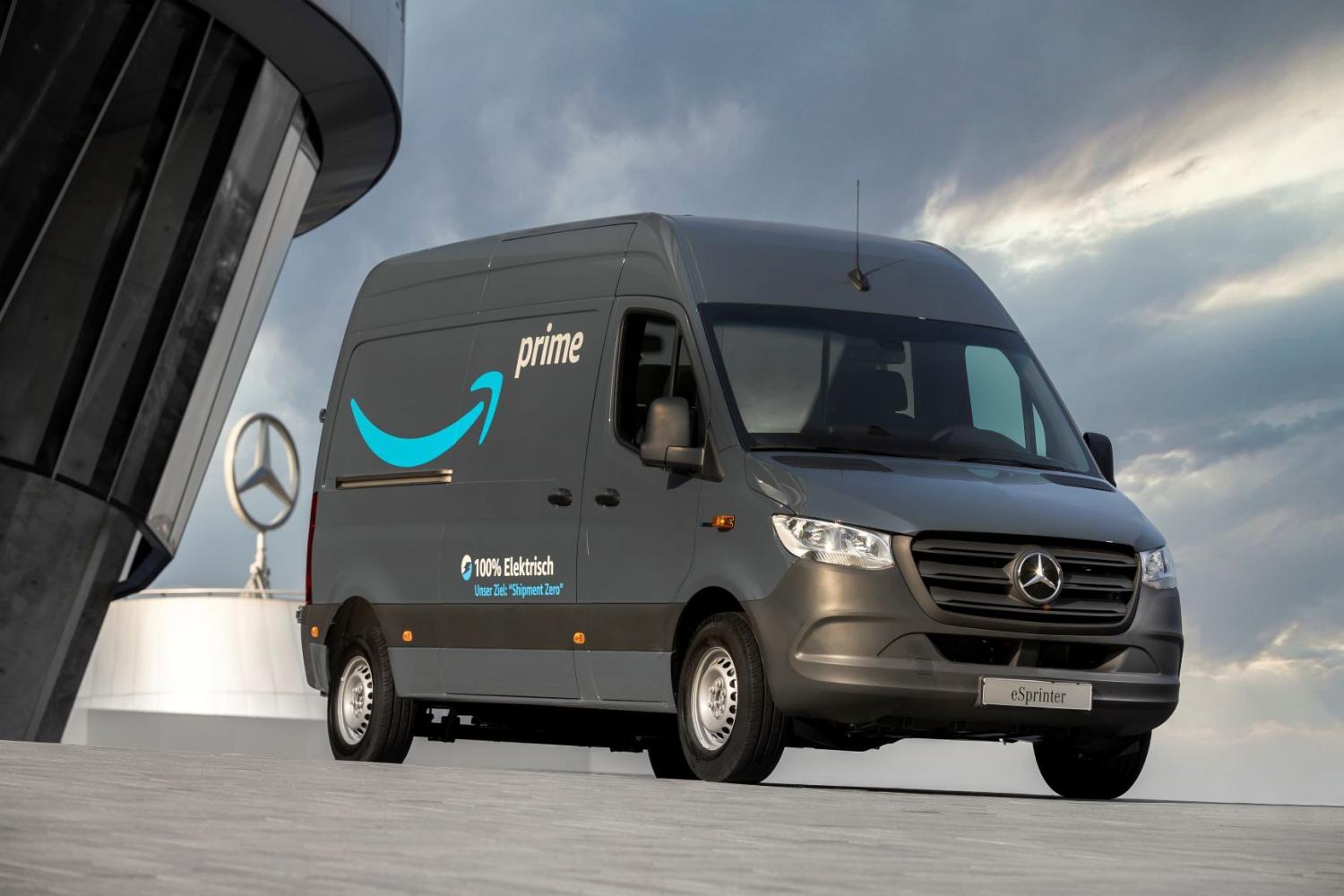
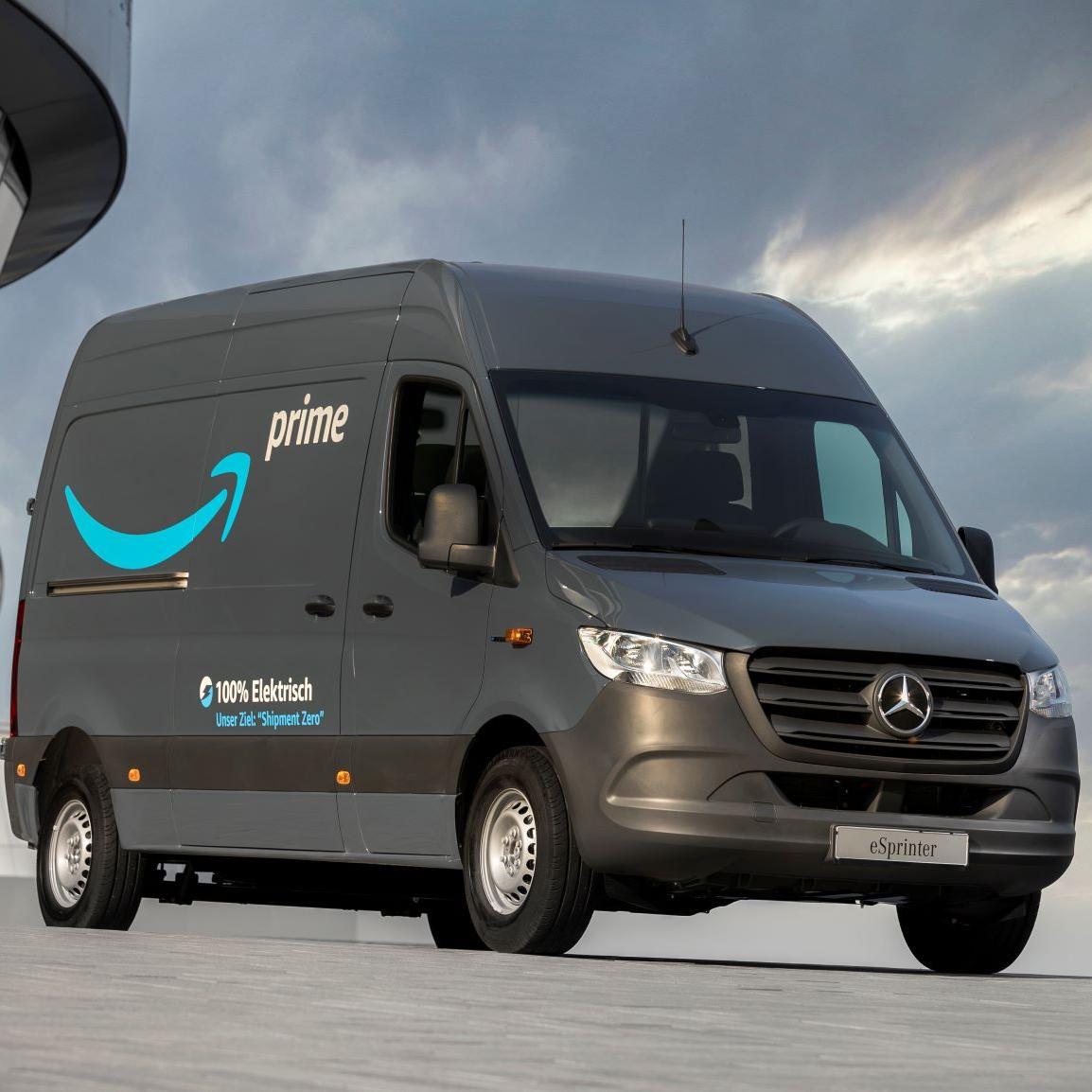
The ubiquitous white boxy U.S. Postal Service mail trucks have long been a common sight on our streets, followed by the cavernous brown UPS vans. Now, silver-hued Amazon delivery vans are an increasingly familiar presence in our neighborhoods. Soon, more of those vans, many of which are manufactured by Mercedes-Benz, will be all-electric — at least on one side of the pond.
Amazon recently announced that it would order 1,800 electric vehicles (EVs) manufactured by Mercedes-Benz Vans for use in its European fleet. The zero-emission vans will start making deliveries within Europe as soon as this year. Over 1,200 of the vans will be Mercedes-Benz eSprinters. When the automaker unveiled the eSprinter last year, it said the van features a range of over 90 miles on a full charge and payload approaching 2,000 pounds, specs well-suited for Amazon’s urban and suburban delivery routes.
The remainder of the all-electric vans joining Amazon’s delivery fleet — or, to be exact, joining those of its delivery partners — will be eVito models. This Mercedes-Benz mid-size van is more of a better fit for densely populated areas; it also has an impressive range with a reported 200-plus miles fully charged.
Policymakers are certainly cheered by this alliance. “Amazon’s investment is a strong and concrete sign of its commitment and alignment to EU priorities,” said Fabio Massimo Castaldo, one of the European Parliament’s vice presidents, in a public statement. “Amazon continues to contribute to the achievement of the EU Green Deal goals, foster technological innovation and generate resilient and sustainable jobs in Europe. I hope that other corporations will follow Amazon’s example in the near future.”
This acquisition builds on what Amazon says is its long-term commitment to electric vehicles. Last fall, the company announced a massive procurement from the EV startup Rivian, to the tune of 100,000 all-electric vehicles that the company said could start making the rounds next year. As of this spring, those plans are still on track, but Amazon’s deal with Mercedes-Benz shows the technology and delivery giant is taking zero chances on its plan to reduce its fleets’ emissions.
This relationship also gives both companies street cred about their sustainability commitments. Last year, Amazon and its founder, Jeff Bezos, launched The Climate Pledge, a global private-sector effort to reach the goals of the Paris Accords 10 years early, by 2040. Mercedes-Benz just hopped on this corporate sustainability bandwagon, announcing its alignment the same day the companies announced their EV commitment. Amazon has faced its fair share of criticism from both within and outside its ranks; additional commitments like this one are a way to score the company more buy-in from the sustainerati.
Meanwhile, Amazon’s competitors on the logistics side are blazing their own paths into the world of all-electric vehicles. For example, UPS has been working with the EV startup Arrival to develop emissions-free trucks. And despite all its challenges, the U.S. Postal Service is exploring options for electric vans and trucks as well. Fedex has its standard response – the company is often quick to note that EVs have been a part of the logistic giant’s fleet since 2009.
Image credit: Business Wire
Uber, Lyft and AB 5: A Huge Disruption Within the Gig Economy

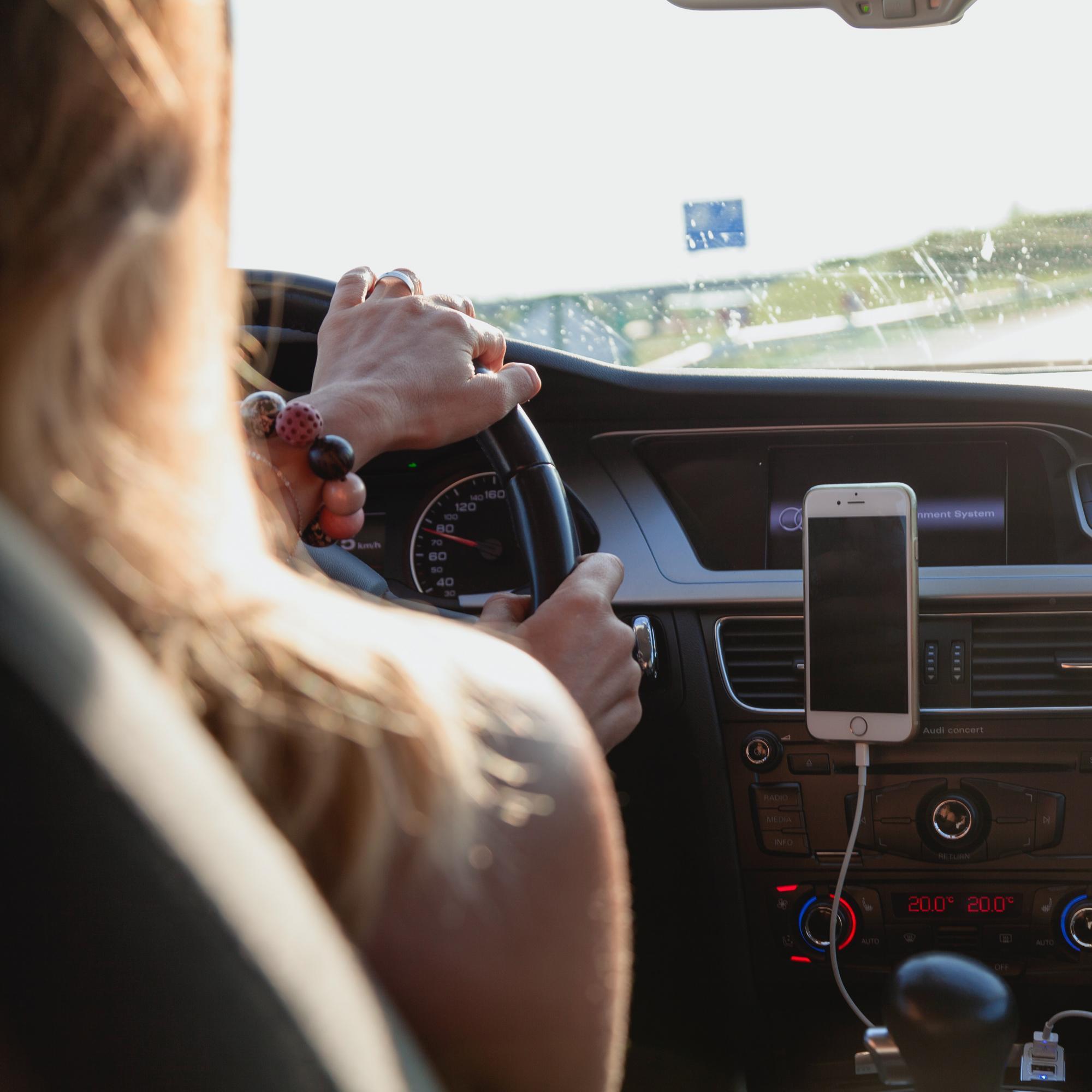
Photo: California has sought to ensure work protections for rideshare drivers under AB 5, but the industry is responding with Proposition 22, to be voted on by California residents this November.
The majority of Uber and Lyft drivers work long shifts, as one survey concluded 72 percent of them have reported they solely rely on driving as their main source of income. Though rideshare drivers are not eligible for employee benefits, they have the freedom and autonomy to choose when to work and to decline rides. But what has been appealing about rideshare driving and other gig work in the past may not be as promising in the future.
Due to the global COVID-19 pandemic, Uber laid off 14 percent of its corporate workforce — more than 3,000 employees — and in its second quarter results, the company revealed a 75 percent decline in ridership and a 61 percent decline in revenues compared to last year. Ridership declined from 21.8 million trips last year to 8.7 million this year, according to the disclosure.
Given more time to comply with California’s Assembly Bill 5 (AB 5), which seeks to reclassify gig workers as employees, Uber and Lyft are left in a delicate quandary.
Both San Francisco-based companies have threatened to cease operations in California if state laws require them to classify drivers as employees as opposed to independent contractors. The companies argue that such a reclassification would mean higher expenditures and a transformation of their business models to the detriment of drivers.
In turn, drivers are split: They either prefer to work under these rideshare companies’ current arrangement with its workers, or they feel as if they are treated unfairly by the likes of Uber and Lyft.
AB 5 aims to protect gig workers
Assembly Bill 5 was signed into law in September 2019 with the goal to protect and ensure contract or gig workers by classifying them as employees. This classification, which affects many industries including meal delivery services and rideshare companies, mandates a minimum wage, benefits, scheduled breaks, paid sick and family leave, and health insurance.
AB 5 came into effect January 1, 2020 and since then, Uber and Lyft have vigorously opposed the law. Both companies argue they are technology platforms with minimum engagement between drivers and riders; their logic dictates drivers are not at the core of their businesses. Uber and Lyft classify their drivers as independent contractors who are responsible for their own vehicles and their maintenance, and therefore these workers are not entitled to benefits such as overtime pay and insurance.
Rethinking business models for both profit and drivers
With a franchise model in place, Uber would revert to a system of fleet operations. This means franchising its technologies to smaller organizations who would hire and be responsible for drivers. Uber is already conducting such an approach with its operations in Germany and Spain.
The result would be less monitoring and regulations that would affect the relationship between drivers and rideshare companies. Of course, there would be several outcomes of this new business model, starting with increased fares and costs for consumers.
Uncertainty for drivers lies ahead
With COVID-19 restrictions slowly lifting, it’s difficult to estimate how quickly ridership will increase or whether Uber and Lyft drivers will even return. Where does this leave drivers? With their new employee status, drivers may not have the flexibility to choose when they would want to work. And with additional COVID-19 layoffs underway, more potential drivers could end up relying on gigs through working for Uber or Lyft.
Uneven periods of employment and flexibility once sufficed for drivers, but now many of them are rethinking their participation in the gig economy as it becomes less remunerative. In August, drivers’ collective groups including Gig Workers Rising, Rideshare Drivers United and We Drivers Progress organized a rally in support of gaining the employee status to which they are entitled under AB 5.
Would such a shift in the gig economy actually increase the number of Uber or Lyft drivers? Or would the outcome deter current drivers from working within the gig economy?
In the meantime, Uber, Lyft, and food delivery services such as DoorDash and Postmates have teamed up to campaign for Proposition 22, which would allow these companies to continue classifying its drivers as independent contractors. If this law passes, drivers would become employees only under three conditions: companies actually schedule drivers’ hours, they require the acceptance of specific ride and delivery requests, or a company restricts drivers from working for other organizations.
In supporting this ballot initiative, Uber and Lyft are arguing that its drivers prefer their status as independent contractors. In November, California voters will vote yes or no on Prop 22 – time will tell how drivers will respond.
Image credit: Peter Fazekas/Pexels
A New Twist on Virtual Travel Tours: Fundraising for Social Impact
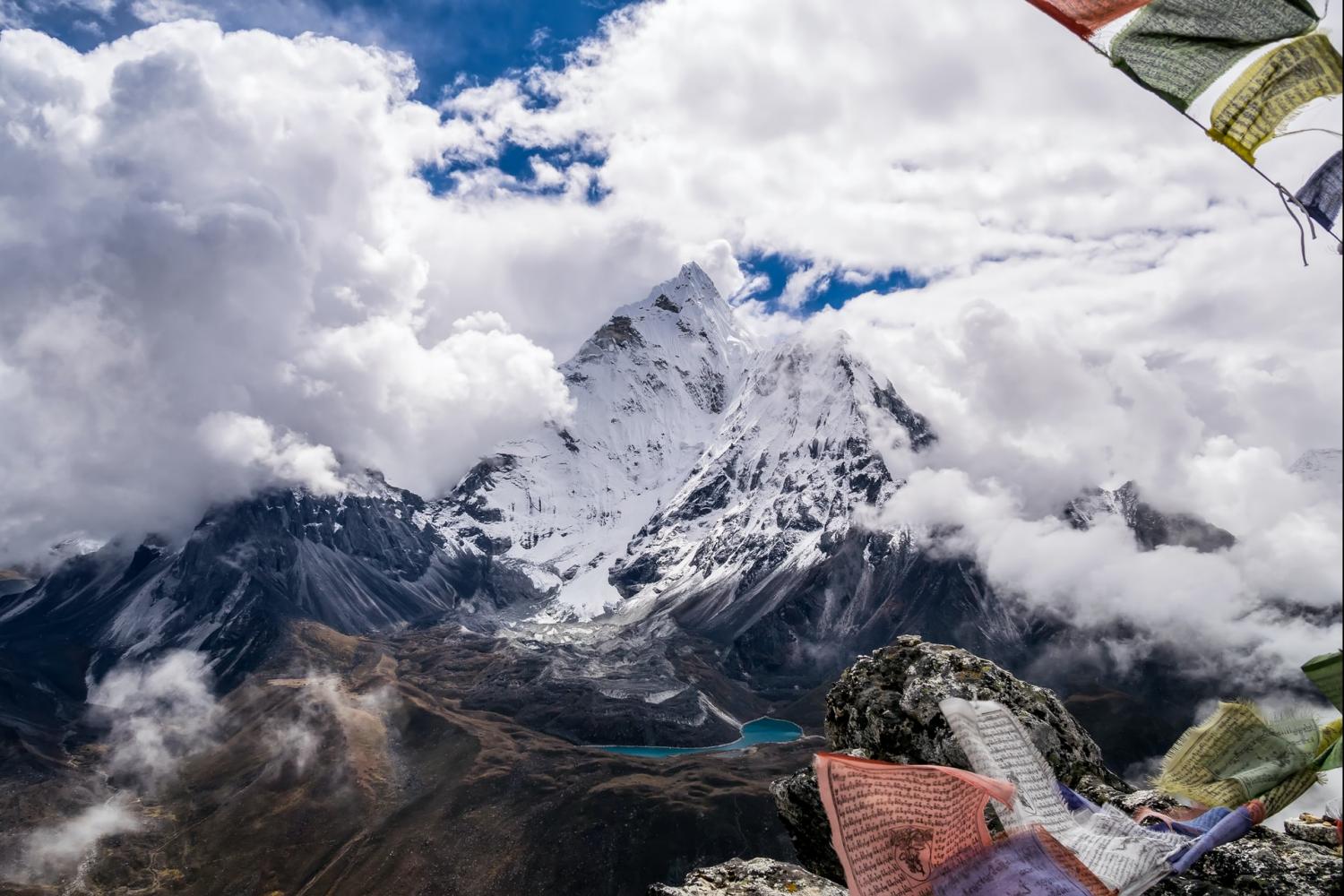

At a time when the global hospitality industry is scrambling to keep potential travelers’ interest — including cruise lines, theme parks and museums — virtual tours have become a lifeline. The good people running these places and organizations are doing what they can to stay afloat until the pandemic subsides and we can all travel again. Offering the chance to visit via an internet connection for many is the best option until a vaccine for COVID-19 is developed or if, like SARS did years ago, the virus “miraculously goes away.”
Next month, one travel company will try to harness virtual tours as a means of doing good.
G Adventures and its nonprofit partner, Planeterra, have announced a challenge that strives to motivate the global travel sector to rebuild community tourism in the wake of the COVID-19 pandemic.
From September 21 to 27, Planeterra and G Adventures are asking people to register, donate money and walk 40 miles (65 kilometers) to complete a “virtual trek” to Everest Base Camp in a bid to commemorate World Tourism Day. That’s requiring participants to walk 85,000 steps, the equivalent of reaching the base camp in Nepal. (Yes, you can complete this challenge on flat ground.) G Adventures’ founder, Bruce Poon Tip, has assembled his team of virtual trekkers and said he’d match donations up to the equivalent of approximately $19,000.
“The Planeterra Trek Challenge is an opportunity for us to come together virtually and create a sense of connection at a time where people are feeling distanced, not just from travel but from other countries and cultures,” said Poon Tip in an emailed statement to TriplePundit. “Most of us are missing traveling and many are looking for a way to give back to the people and communities who have given us life-changing travel experiences in the past. I’m excited to invite our agency partners, suppliers and the wider tourism industry to join us in raising some much-needed funds.”
The funds will offer assistance to Planeterra’s network of 85 community projects around the world, which stretch from Peru to Nepal and many places in between. As is the case with many local economies, these projects have been left without income as global travel ceased due to the pandemic. Funds are needed so these communities can not only rebuild and recover, but also retrain for a safe reopening and invest in updated health and safety measures. To that end, Planeterra has encouraged its travel agency partners to work together in order to boost awareness of how important the travel sector is to communities across the globe.
Virtual tours may have been a welcome distraction during the onset of this pandemic, and cruise lines, ice hotels, museums and, yes, even Disneyland, have joined the fray. But as the pandemic has worn on and sheltering in place has morphed from a disruption to routine, the appeals of a virtual world are fast diminishing.
This venture between Planeterra and G Adventures, however, is striving to transform what’s quickly become a tired pastime into a noble purpose.
Sign up for the weekly Brands Taking Stands newsletter, which arrives in your inbox every Wednesday.
Image credit: Toomas Tartes/Unsplash
Starbucks Tells Baristas to Go Out and Vote
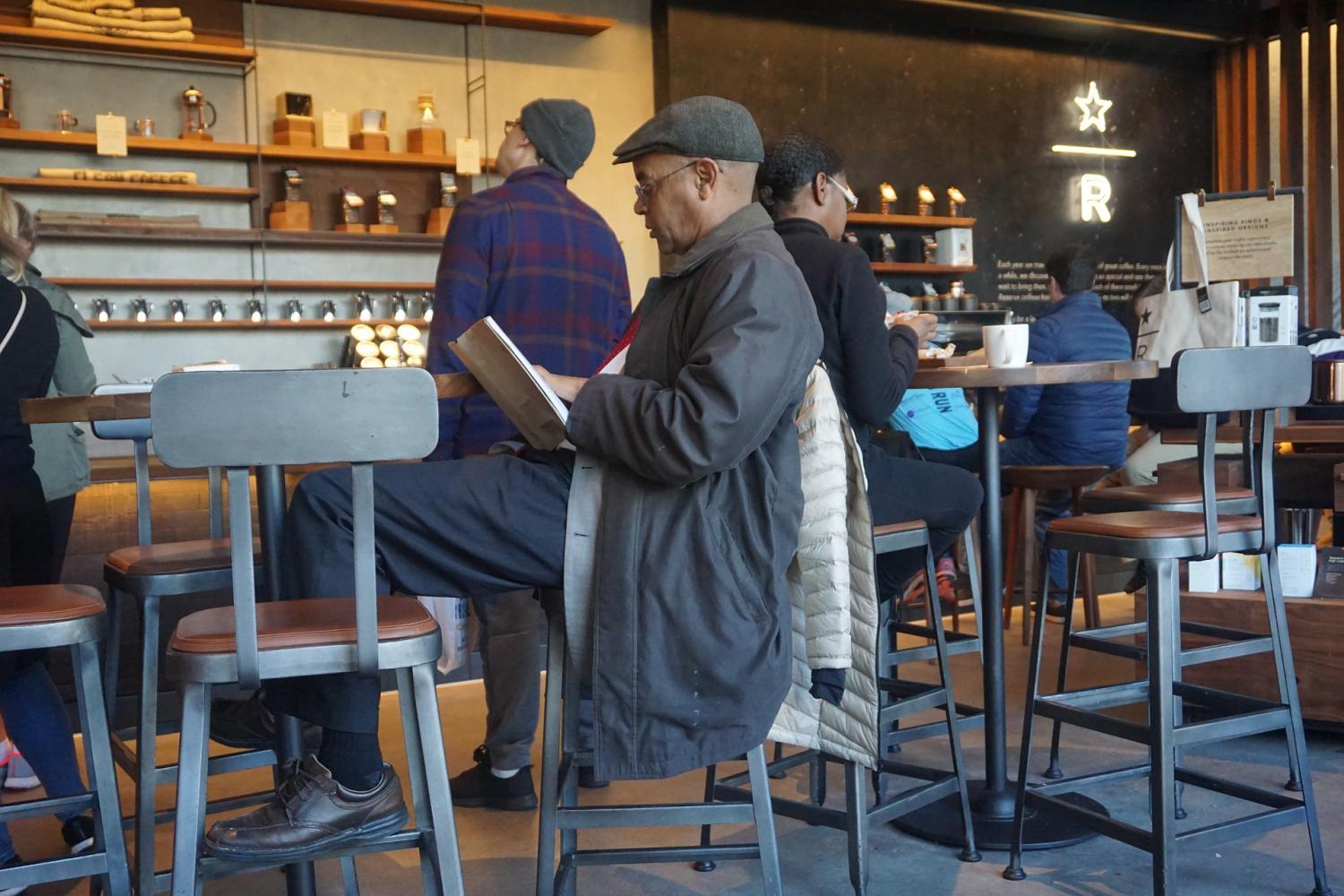

The directive is simple: Go out and make sure your voice is heard this fall, Starbucks told its approximately 200,000 retail managers and baristas. The company announced today that baristas won’t have to make an uncomfortable choice between working a shift behind the espresso bar or voting on November 3.
“The upcoming election is a reminder that we, as citizens, play an active role in our society by simply getting involved and voting,” Kevin Johnson, CEO of Starbucks, wrote in a letter the coffee giant distributed company-wide this week. “Who you vote for is a very personal decision that you make as a citizen. It is one way for you to be heard. It is how democracy works.”
Starbucks has made a clarion call to its customers, too. Starting September 8, citizens can visit FuelOurDemocracy.com so they can make their plans to register and vote.
In addition, the company said it will work with Civic Alliance, which describes itself as a non-partisan coalition of companies that helps employees find volunteer opportunities, such as poll workers, in order to support fair access to U.S. elections.
Starbucks’ move is particularly noteworthy as this year’s election cycle has been sidetracked by the novel coronavirus pandemic and accusations that the current administration in the White House is doing whatever it can to sabotage the right to vote, whether that occurs at actual polling stations on Election Day or via the U.S. Postal Service.
The coffee giant joins companies like Patagonia and Levi Strauss. Concurrently, nonpartisan corporate groups that support free and fair access to the ballot box, including Business For America and the American Sustainable Business Council, are finding more companies quick and willing to align with their efforts.
The announcement by Starbucks is important as the company employs many people who comprise groups with historically low rates of participating in U.S. elections, namely students and people of color. It’s one thing to plan how you will vote if you are a white-collar employee who is now working from home. But for retail workers, who often work very different schedules from week to week, their daily reality is far different — and many states make it difficult to vote using an absentee ballot.
DJ Mitchell-Jones, a manager at a Starbucks store in Miami Gardens, Florida, is one example of how employees across the U.S. are taking on causes and being heard by companies while they are both on and off the clock. While working at one of the company’s “community stores” — which Starbucks describes as retail locations in underserved neighborhoods that seek to improve job training and economic opportunities for local residents — it’s clear the company heard Mitchell-Jones’ calls to action, one she has made often since she helped open this particular Starbucks location in the fall of 2017.
“We complain about what’s happening in our communities, but so, so many people in our communities don’t vote,” Mitchell-Jones explained in a Starbucks public statement. “After [the 2018 midterm election], I jumped in with both feet. It’s my driving force. This store has become a hub of information and access.”
As voter suppression efforts have morphed over the years from poll taxes, to aiming fire hoses at citizens, to what are now tactics designed to encourage cynicism by making accusations of “voter fraud,” we’ll need more actions like that of Starbucks over the next several weeks.
Sign up for the weekly Brands Taking Stands newsletter, which arrives in your inbox every Wednesday.
Image credit: Marvette Critney/Pixabay
Hurricane Season 2020 Is a Reminder of Why Companies Must Plan for Resilience

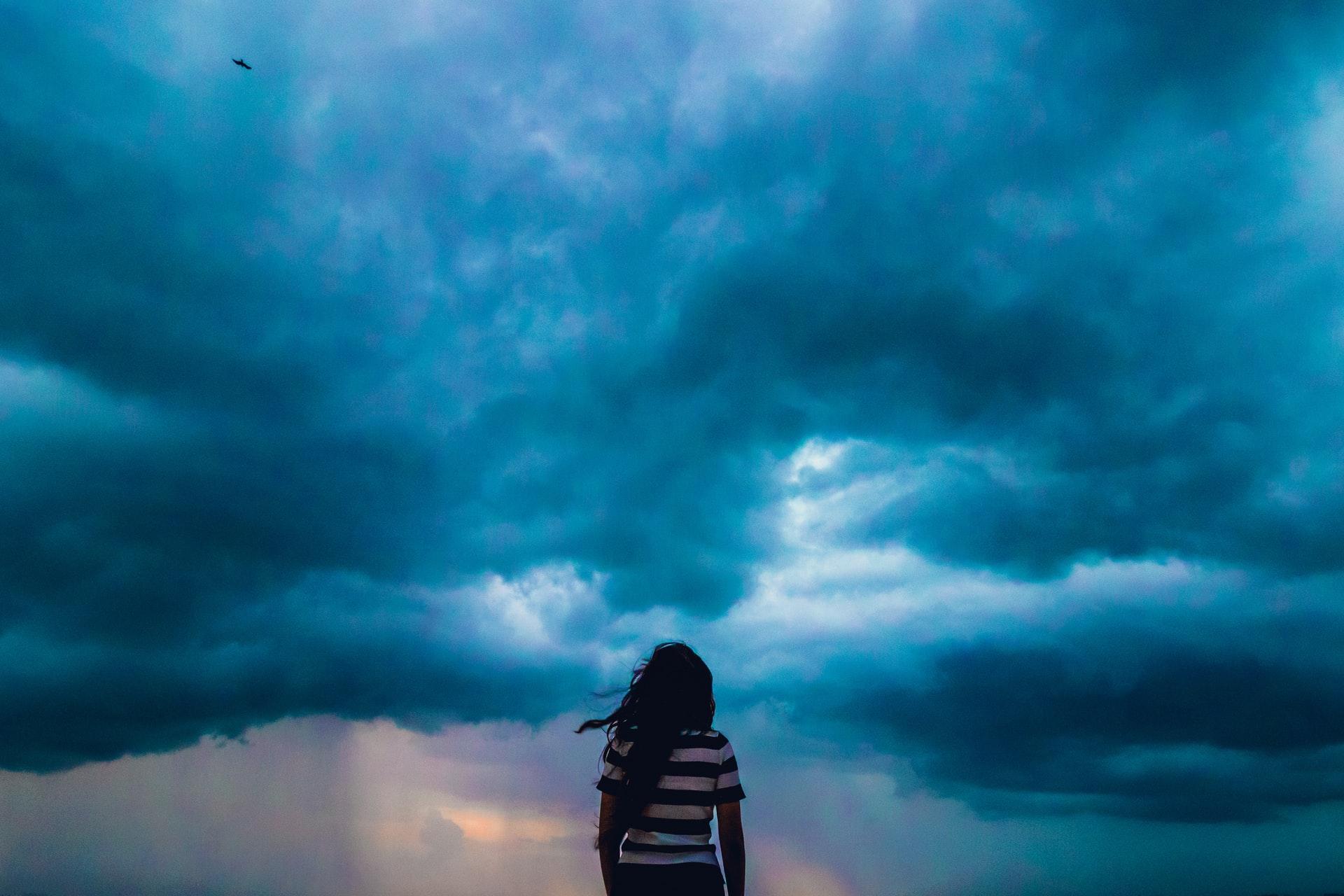
We’re barreling full force into the heart of hurricane season. The peak is usually mid-August to early October. Yet during the past 10 years, the biggest, costliest storms have hit in September. Superstorm Sandy was an exception with a late arrival in October. Climate change is turning up the volume on storms: Last year was the ninth year in a row that the U.S. endured eight billion-dollar disasters and the fifth consecutive year with at least 10 billion-dollar extreme weather events in total.
The climate change horse is already out of the barn. Now is time to adapt to these potentially devastating impacts and figure out how to make our energy systems more resilient. Critical infrastructure across the country is vulnerable to climate change risks, but nowhere more so than coastal areas.
So, what exactly does it mean to make our energy infrastructure more resilient?
A success story about resilience after a chaotic hurricane season
Similar to the wildfire situation in California, microgrids, smart grids, renewable energy, and storage systems can help make energy systems more resilient. Communities are less dependent on vulnerable transmission lines and central power stations, and the technologies are less carbon-intensive to boot. We already have the evidence that these investments make sense.
A 2017 report by CenterPoint Energy, the Houston area’s investor-owned electric utility, sheds light on how investments in smart sensors, controls, and communications systems allowed the company to improve customer service and reduce the impact of outages. These systems have led to better power-outage tracking and customer notifications, and the intelligent switches installed across CenterPoint’s grid allowed it to avoid nearly 41 million minutes of customer outages during Hurricane Harvey.
In addition, just about every one of Centerpoint’s customers has a smart meter, which not only enhances the visibility of the electric grid, but also has resulted in 15,000 tons of avoided carbon pollution since 2009.
Why renewables are an asset during hurricane season
Wind turbines are typically built to withstand winds up to 55 miles per hour. Harvey had winds nearly double that speed, yet some equipment was able to continue to generate power and function reliably. However, sometimes turbines could not generate power as the local electric grid went down and there was nothing available to which they could connect. In other areas, the equipment had to be shut down because of extreme wind speeds. Although this does not take into account how other types of electricity generation performed, it highlights important considerations that should be included when planning grid improvements.

Customer-centered distributed solar panels can also be helpful in extreme weather. Studies done since the 2017 hurricane season found that panels, if installed correctly, could withstand winds up to 185 miles per hour. Basically, if your roof survives the storm, chances are your panels will too. Further, panels can provide power while the grid is offline. After Harvey hit Texas, there was a nearly 700 percent traffic spike to an article about whether solar panels could withstand hurricanes.
A wake-up call for energy companies and utilities
The installed smart technology alone was not able to prevent all outages during Harvey or any of the other storms that have battered coasts from Puerto Rico and New York to Texas in recent years. Many power substations have flooded, and crews are not always able to immediately travel and contain disruptions.
As we now stare down the barrel of two hurricanes in the Gulf of Mexico with likely more on the way before this hurricane season is over, the decisions about how to strengthen our energy infrastructure are more important than ever. Since 2017, we have seen three Category 4 hurricanes and four Category 5 hurricanes. Some of these storms have been so catastrophic there have been calls to add a Category 6.
The energy and utility industries must engage with policymakers. The choice between minimizing costs and building more resilient energy infrastructure is a false one if the longer-term costs are considered. Resilience must be baked into energy developers’ specifications, and industry-wide guidelines for resilience should be instituted. Utility planners must take a more holistic approach to what resilience means and how to weave it into forecasts. It also means utilities in Texas and many other states need to incorporate robust climate modeling into their plans, regardless of the politics.
And finally, efforts must be made by all decision-makers to ensure that distributed energy is available and affordable. Communities of color and low-income communities bear the brunt of the impacts of hurricanes and have access to the fewest resources for recovery. Ensuring that people in those communities also have access to reliable, resilient energy should be a cornerstone of any resilience strategy.
Image credit: Shashank Sahay/Unsplash